
Professor of chemistry, member of the KU Leuven Institute for Sustainable Metals and Minerals (SIM²)
Department of Chemistry, KU Leuven (Belgium)
Lecture title:
The missing link in circular hydrometallurgy: efficient splitting of salts in acids and bases
Professor Binnemans is an inorganic chemist who is combining fundamental and applied research in the fields of metallurgical chemistry, solvometallurgy and hydrometallurgy. He is head of the SOLVOMET group at the Department of Chemistry of KU Leuven (Belgium). He has more than 30 years of experience working with rare earths and is recognised as a world-leading specialist in this field. He has published 600 papers in international journals. His work has been cited 35,500 times (h-index = 89) according to Web of Science. He has been awarded two ERC Advanced Grants (SOLCRIMET and CIRMET). In 2017, Binnemans founded together with Peter Tom Jones, SOLVOMET Research and Innovation Centre for Circular Hydrometallurgy to support its industry partners in the conceptual and practical development of more sustainable (circular, low-energy input) hydrometallurgical (and solvometallurgical) processes, which are subsequently tested using state-of-the-art lab-scale and mini-pilot-scale experimental facilities. Binnemans is the creator of the concept of circular hydrometallurgy and its 12 principles.
Regenerating all the waste-producing reagents is the main requirement when converting a linear flowsheet into a circular alternative. The regeneration must involve the minimum energy input and the smallest consumption of auxiliary reagents, with these reagents being regenerated whenever feasible. “Regenerate reagents” is the first and most important principle of circular hydrometallurgy. Acids are the often used in leaching operations and the most common acids in hydrometallurgy are sulphuric acid, hydrochloric acid and nitric acid. The protons of the acid are consumed during the leaching of metal ores, concentrates or industrial process residues. . After leaching, the excess acid of the pregnant leach solution (PLS) must be neutralised and the pH increased to remove hydrolysable impurity ions such as iron(III) and aluminium(III) by precipitation as their hydroxides. This neutralization leads to salt formation. More salts are generated during pH control and saponification of acidic extractants by sodium hydroxide and ammonia in solvent extraction processes of metals. A new, but steadily increasing, source of waste salt is the sodium sulphate generated during the production of precursors of cathode active materials (pCAM) for lithium-ion batteries. In this process, a mixed nickel-manganese-cobalt hydroxide is precipitated by adding a sodium hydroxide solution to an aqueous solution comprising nickel(II), manganese(II), and cobalt(II) sulphates, leaving dissolved sodium sulphate in the mother liquor. Although some of the salts can be valorised in different applications, such as sodium sulphate for production of detergents or ammonium sulphate as a fertiliser, the best option is still to convert the salts back into the acids and bases from which they were created, because this regenerates reagents and makes the flowsheets circular. The advantages of hydrochloric acid and nitric acid is that they are relatively easy to regenerate from their salts. Metal chlorides can be converted into hydrochloric acid and a basis oxide by pyrohydrolysis, whereas nitric acid can be regenerated from metal nitrates by a pyrolysis reaction. However, it is much more challenging to convert sulphate salts back into sulphuric acid and a base. The most intensively studied approach is the salt splitting of sodium sulphate into sulphuric acid and sodium hydroxide. These methods used are typically based on electrochemical methods, and three ways of salt splitting are investigated: (1) two-compartment electrolysis systems, (2) three-compartment electrolysis systems, and (3) bipolar membrane electrodialysis systems (BMED). Electrolytic salt splitting technologies have high CAPEX due to the expensive electrolytic cells and membranes, and high OPEX due to the high electricity consumption. These methods are economically feasible only in regions where large amounts of cheap, renewable electricity are available. The expensive membranes are easily clogged and fouled, requiring regular replacement. Moreover, the BMED systems can handle only relatively dilute feed streams (about 100 g/L Na2SO4), and generate dilute NaOH and H2SO4 solutions The NaOH and H2SO4 solutions that are generated by electrodialysis are too dilute for reuse as a reagent in hydrometallurgical processes or for other applications. Concentration of these dilute solutions by techniques such as reverse osmosis (RO), combined with evaporation of water, consumes too much energy, even if the heat released during the condensation of water vapour can be largely recuperated.
This lecture will give an overview of the state-of-the-art for splitting salts generated in hydrometallurgical flowsheets back into the corresponding acid and base. A new concept for splitting of salts has been developed in the SOLVOMET Group of KU Leuven and this approach will be disclosed at the ICHS2014 symposium. It will be described how to produce sulphuric acid and sodium hydroxide from sodium sulphate waste generated during the synthesis of pCAM for lithium-ion batteries. The process also allows for the decomposition of ammonium sulphate into sulphuric acid and ammonia.

Mining & Materials Engineering, McGill University
(Montreal, Canada)
Lecture title:
Immobilization of hazardous elements via innovative crystallization, encapsulation, and nanomaterial-engineered adsorption processes
Dr. George P. Demopoulos is professor of materials engineering at McGill University, where he holds the Gerald G. Hatch Chair. He is recognized internationally for his impactful research contributions in clean hydrometallurgical technologies with emphasis on immobilization of hazardous elements and in sustainable energy materials and processes from synthesis and recycling of Li-ion battery materials to direct electrolysis of iron oxide minerals. For his innovative leadership in materials processing research, he was inducted in 2018 as Fellow to the Canadian Academy of Engineering and he was honoured in 2024 by TMS with the Distinguished EPD Lecturer Award.
The climate change threat and the need to meet the growing demand for affordable and clean energy, clean water, and socioeconomic development, it makes imperative for the raw materials sector to embracing the circular economy paradigm. In this presentation, I plan to provide an overview of our sustainability-driven hydrometallurgical research and then delve into the subject of hazardous element immobilization. Examples of our circular hydrometallurgy work are the regeneration of HCl lixiviant, the production of battery-grade Li2CO3, and the hydrothermal synthesis and direct recycling of battery materials like LiFePO4. Hydrometallurgy is notorious for the heavy use of chemicals and the generation of waste solids and waters. This calls for application of the circular hydrometallurgy principle of “Safely dispose of potentially harmful elements” as introduced by the pioneering work of the SOLVOMET Group! In this regard, I will outline recent advances in isolating/immobilizing hazardous elements like As, Sb, and Se that are released during metallurgical processing of various ores or concentrates. This is done by a combination of crystallization, encapsulation and nanomaterial/photocatalytic assisted adsorption and deposition approaches. Here we will refer to production of environmentally stable scorodite (FeAsO4.2H2O) solids under controlled supersaturation that was commercialized in Chile. Recently the process has been re-designed to produce gypsum-free scorodite that can be advantageously further stabilized via mineralized aluminum hydroxide encapsulation. Immobilization of antimony (V) in the form of the synthetic mineral tripuhite (FeSbO4), and elimination of Se(VI) via nanomaterial-based processes are other examples. One nanomaterial option is to reduce selenate (SeO42-) species by photocatalysis using newly formulated mixed-phase nanoTiO2 catalysts produced in a CSTR and the other to use stabilized nano-Zero-Valent Iron. In both cases elemental Se is obtained that can be potentially recycled for advanced material applications while detoxifying water to < 5 μg/L.
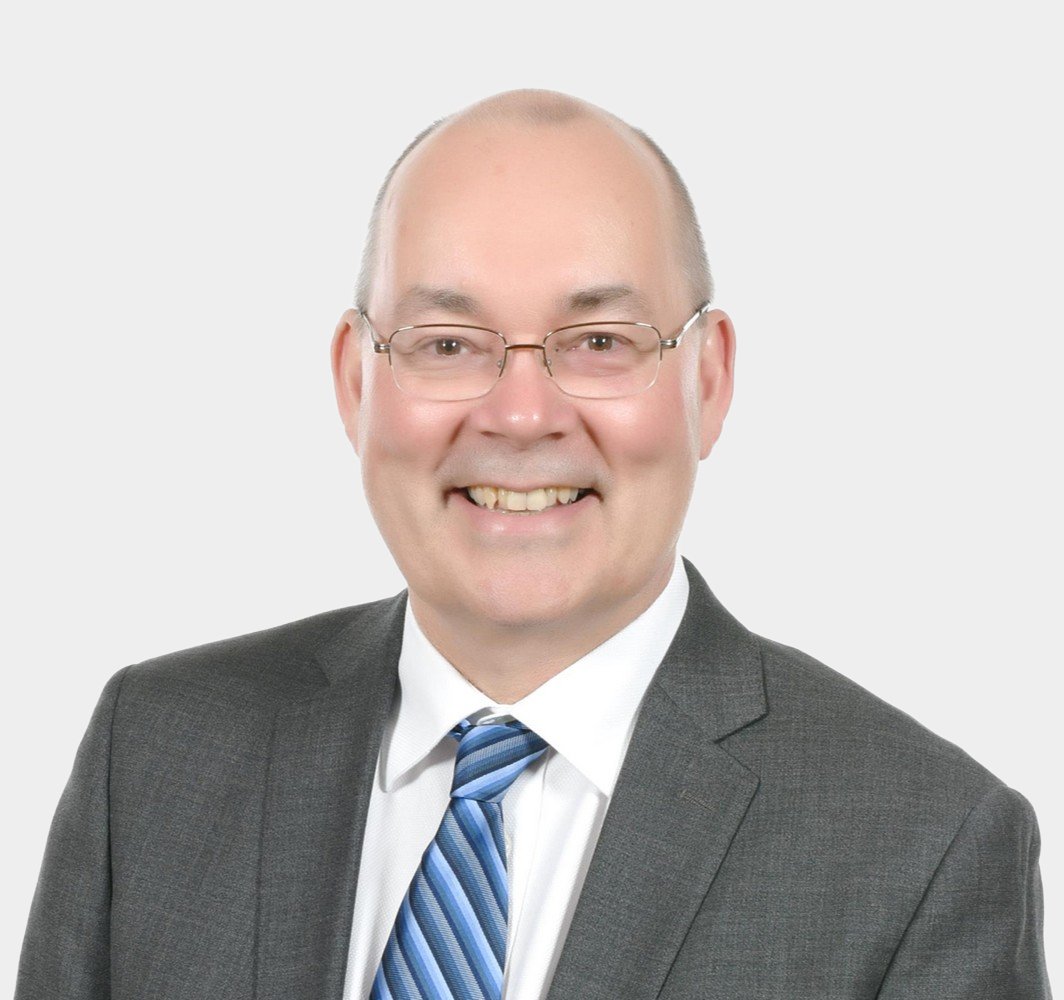
Department of Materials Engineering
The University of British Columbia
(Vancouver, Canada)
Lecture title:
The Atlas Materials Process for Nickel and Cobalt Recovery from Saprolite Ores – a Case Study in Disruptive Circularity
David completed his B.A.Sc. and Ph.D. in Metallurgical Engineering at Queen’s University at Kingston. Since 1984, David has worked at the University of British Columbia in Vancouver, Canada and holds the position of Professor and Chair, Industrial Research Chair in Hydrometallurgy. David and his students and colleagues have published over 300 technical articles and have actively taught short courses and seminars to the metallurgical community over the last 35 years.
David has worked closely with industry to develop and commercialize technology. David is currently working on commercialization of technology in the extraction of battery materials and other critical materials with a focus on carbon negative processing and production of by-products that contribute to decarbonization of other industrial sectors.
David has received a number of professional awards including the Sherritt Hydrometallurgy Award (METSOC), the EPD Science Award (TMS), the Wadsworth Award (TMS) and the INCO Medal (CIM). David is a Fellow of CIM, Engineers Canada, the Canadian Academy of Engineering and was elected a member of the US National Academy of Engineering in 2023.
The rise in electric vehicle transportation has challenged the supply of critical elements and materials such as nickel, cobalt, manganese, lithium and graphite for battery manufacture. Traditional sulfide and laterite processing routes for nickel and cobalt are carbon intensive and emit large amounts of solid waste that must be managed in perpetuity. The battery supply chain needs to pivot to low carbon, responsible supply.
Atlas Materials has developed a hydrometallurgical process that is designed to increase the available supply of nickel and cobalt from saprolite ores while producing coproducts. The process uses hydrochloric acid for metal extraction and sodium hydroxide for nickel and cobalt mixed hydroxide precipitation (MHP). Hydrochloric acid and sodium hydroxide are produced via the chlor alkali process using renewable energy. The leaching and neutralization residue has utility as an SCM and will contribute to decarbonization of cement manufacture. Magnesium hydroxide may be produced via sodium hydroxide addition to a magnesium chloride solution. Magnesium hydroxide has established markets in the water treatment, flue gas desulfurization, flame retardant and pharmaceutical industries. In the medium to longer term, increased amounts of magnesium hydroxide production may contribute to atmospheric decarbonization.
The Atlas Materials process will be presented along with experimental data from bench and pilot plant testing. The first process plant (Electra) will treat 100,000 tonnes of imported nickel saprolite ore and is expected to start production in late 2027. This new route to nickel and cobalt production along with low carbon byproducts will be disruptive to battery material supply chains and offer a low carbon alternative to conventional processing.

Professor at Curtin University
Chief Scientist of the Future Battery Industries CRC
(Curtin University, Australia)
Lecture title:
Development of alkaline glycine leach and metal recovery technology and its evaluation within the context of Circular Hydrometallurgy
Professor Jacques Eksteen is a chemical and metallurgical engineer and is the Chair for Extractive Metallurgy within the Western Australian School of Mines, Minerals, Energy and Chemical Engineering at Curtin University. He is also the program lead for Technology Readiness Level Progression in the national Trailblazer program on Resources Technology and Critical Minerals, and the Chief Scientist of the Future Battery Industries Cooperative Research Centre (FBICRC). Furthermore, he also held the roles of Research Director and Chief Operating Officer at the FBICRC.
Jacques has 30 years’ experience in academia and industry, most of that time in work related Critical Minerals, Metals and Materials, in particular in platinum group metals (PGMs), rare earths, battery metals and energy metals. He has published over 200 peer-reviewed articles in leading journals and refereed conference proceedings and is a listed inventor of many patents related to extractive metallurgical technologies.
For most of the 20th century, our metallurgical focus has been on metallurgical bulk commodities that could be concentrated, smelted, converted, and refined under less stringent constraints imposed by communities, water availability, safety, and governments. As ore grades decreased and ores also became more polymetallic, and as the risks around Critical Minerals became clear, particularly insofar they are used in the renewable energy transition, and compliance to ESG targets became essential, a sea change has been required in how we extract and refine metals. The high-grade requirements imposed by smelters (or pressure leach operations) have become hard to satisfy without significant recovery loss at the mine and concentrators.
As the value of water increased in many mining jurisdictions and the industry have become more focused on circular economy drivers, the reuse, repurpose and recycle of water and reagents and wastes have become essential. Dry disposal of tailings has also become a major driver to recycle the water and chemicals back to the metallurgical operations. Conventional hydrometallurgical operations, which mostly used either mineral acids such as sulfuric acid, ammonia, or sodium cyanide for metal recovery, has become problematic due to their lack of selective dissolution, the need for expensive post-treatment (neutralization and detoxification) and the poor ability to recover, recycle and reuse the reagents have become problematic and often not sustainable.
Curtin University commenced in 2012 with the development of an alkaline amino acid leach and recovery technology to leach precious metals (Au, Ag, Pd) initially, but which was subsequently expanded to a diverse range of chalcophile base metals (such as Cu, Ni, Co, Zn, Cd, Pb and others). This leach and recovery technology will be evaluated within the context of the twelve principles of circular hydrometallurgy. As a lixiviant system, alkaline glycine was shown to be highly selective over many problematic gangue elements that often deport during acid dissolution such as Fe, Mn, Mg, Ca, Al, Si, etc. (lithophile and siderophile elements). Its non-toxicity, crystallinity, and non-volatility, irrespective of pH, has made it a versatile contender to cyanide and ammonia in the alkaline domain. The occurrence of three dominant charged species allows switching of functionality with pH. In the alkaline (pH>9) domain, it also proved to be stable against oxidation and reduction in the typical ranges used in metal leaching, stable against UV destruction, and stable against bacterial degradation. These attributes became very important for its recyclability and reuse. Further the leach technologies, the recovery technologies to selectively recover metals from solution had to be developed.
Further research has therefore been performed into precipitation, solvent extraction, ion exchange, carbon and resin adsorption technologies and selective crystallization from aqueous glycine systems that were required for effective metal recovery and refining. Over time, various enhancements of the technology were developed to provide fit-for-purpose solutions for specific metals or mineral suites. For example, a starved cyanide (zero “free” cyanide) GlyCat™ technology was developed, as well as glycine leach variants that included ammonia, ferricyanide, permanganate, peroxide, etc. which explored various suitable combinations of oxidants, reductants, pH modifiers and synergistic ligands. The technology is currently being rolled out at several base and precious metals operations in Africa, the America’s, Australia, and Asia. Like all new innovations it had to pass through a “Valley of Death” period and adoption of the technology was initially slow in an industry known for its conservative approach. The technology has also shown much promise in the processing of electronic wastes, such as printed circuit boards, IC chips, and NCM-type lithium-ion batteries. The range of technologies that uses glycine as a foundation reagent is still only at the cusp of deployment and much research opportunities remain to optimize this technology for a varied range of applications.

Professor Department of Chemical Engineering KTH Royal Institute of Technology
Lecture title:
The Potential for Eutectic Freeze Crystallization in Hydrometallurgical Processing
Kerstin Forsberg is professor in chemical engineering with expertise in separation processes, in particular crystallization. Forsberg is devoted to educating students and contributing to the field of hydrometallurgy. She often applies her knowledge to develop more energy and resource efficient processes for material recovery from primary and secondary resources. She is the current chair of the Hydrometallurgy and Electrometallurgy Committee within The Minerals, Metals & Materials Society (TMS) and member of the editorial team of the journal Sustainable Materials and Technologies (SM&T).
Eutectic freeze crystallization (EFC) is a technology that can be used to recover pure water and salts from aqueous solutions within e.g., desalination, pulp and paper, textile, mining, and metallurgy industries. The working principle of EFC is based on cooling a concentrated saline aqueous solution down to the eutectic point where salt crystals and ice crystals are formed simultaneously. The heat of fusion of ice is almost seven times lower than the heat of evaporation of water making EFC an energy saving alternative to evaporative crystallization. Furthermore, no addition of chemicals is required, and corrosion is minimal at low temperature, which contributes to the potential for circularity and material efficiency.
The technology has been demonstrated on pilot scale for a few applications. Successful implementation of this technology can lead to energy savings, increased resource recovery and waste minimization, thereby directly linking to the UN development goal to promote sustainable industrialization. In order to achieve this, the technology needs to be improved for example through a better understanding of the crystallization processes involved, scale formation and heat integration.
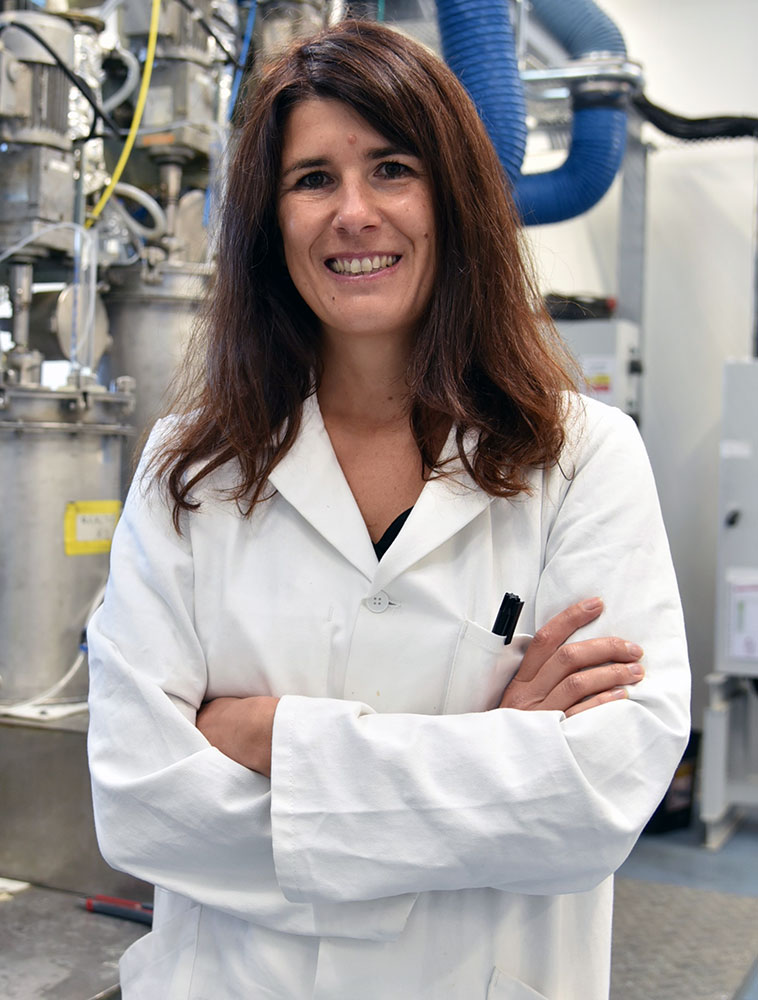
BRGM French Geological Survey
(Orléans, France)
Lecture title:
Biohydrometallurgy and circularity, a long story
Dr. Anne-Gwénaëlle Guezennec is a senior researcher in process engineering dedicated to extractive metallurgy at BRGM, the French geological survey. She has almost 20 years of research experience in the field of bio-hydrometallurgical process development and has been involved in numerous collaborative research projects at national or European level (H2020 NEMO, H2020 Crocodile, H2020 Rawmina, HE CICERO…). Dr Guezennec is a member of the scientific committee of the International Biohydrometallurgy Symposium (IBS) and of the French researchers association PROMETHEE dedicated to hydrometallurgy.
Biohydrometallurgy – also called biomining – is a portfolio of hydrometallurgical processes that use microorganisms (bacteria, archaea or fungi) to extract metals from mineral matrixes. The bugs either produce the chemicals required to achieve the hydrometallurgical reactions or catalyse these reactions. Amongst these bioprocesses, bioleaching is applied worldwide to extract metals such as Cu, Co, Ni, Au from ores or mining wastes. Microbial activity has played an important role in the formation and decomposition of mineral matter since the origins of life on Earth. Human use of the natural capability of certain microbes to decompose a variety of mineral deposits is an old practice that dates back to the Romans in the first century BC and probably the Phoenicians before that. Bioleaching has been practiced to recover copper from sulfide ores for centuries in Spain, Sweden, Germany, China, and elsewhere. This was attested by Paracelsus, who described in the 16th century copper leaching from sulfide ores, undoubtedly mediated by microbes, followed by precipitation on iron (known today as cementation). These early miners were using microbial activity without being aware that microbes were involved. In the early 20th century, the first oxidizing microorganisms were identified and shown to catalyze/accelerate mineral dissolution and consequently to solubilize or expose and recover target metals. This discovery has greatly accelerated our understanding of the biological mechanisms involved in biomining and the associated development of metallurgical bioprocesses. Since then, biohydrometallurgy has led to commercial technologies that have been operated worldwide for over half a century. Although it remains a niche application, in the last decades it has garnered growing interest from both the academic community and the mining industry, who increasingly consider biomining to be an ecologically acceptable and economic alternative to conventional processes such as pyrometallurgy or conventional hydrometallurgy. In particular, the use of microorganisms in hydrometallurgical operations decreases the consumption of energy and of chemicals.
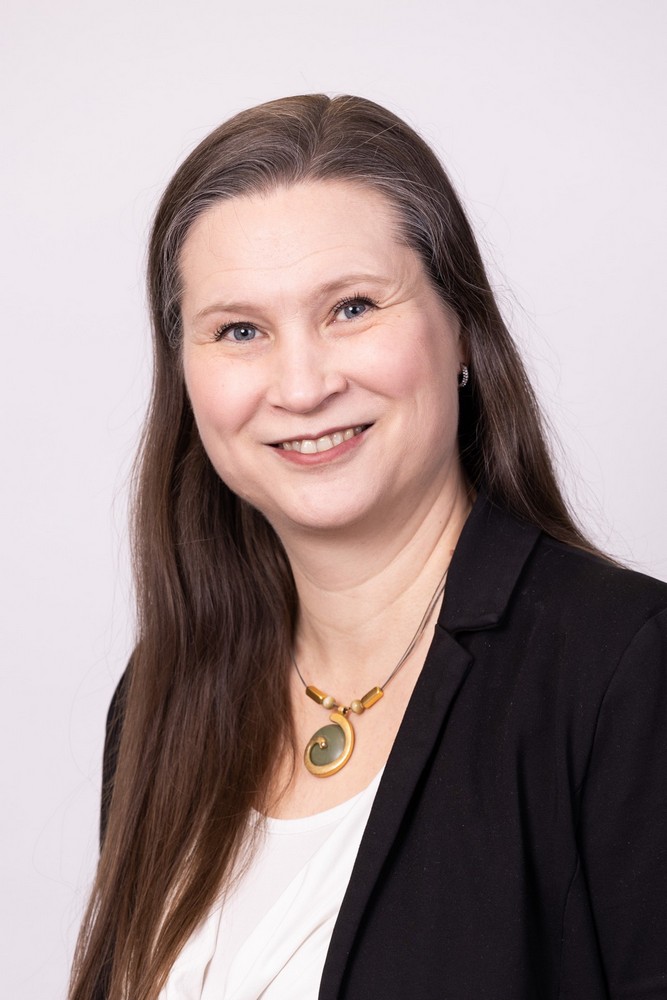
VTT Technical Research Centre of Finland
Lecture title:
Closing water loops in minerals processing
Päivi Kinnunen is a Research Professor in circular economy of energy metals at VTT (Finland) and an Adjunct Professor in process technologies for circular economy at Tampere University. Her research includes industrial circular economy, closing water loops in mining, valorisation of mining industry’s side streams, and hydrometallurgical process development. She has experience in coordinating large mining water related EU projects, such as ITERAMS and LITHOS. She is a member of the Finnish Expert Panel for Sustainable Development. Before joining VTT, she held industrial positions in metallurgy, and developed sustainable production processes for the mining and metal industry. In addition to technical competences, Dr. Tech. Kinnunen has M.Sc. degree in Economics and Business Administration with the special focus on circular economy in mining.
Mineral processing utilizes large amounts of water and most of the mining companies have targets to reduce water consumption. Closed water loops in mining are systems that reuse and recycle water reducing the need for fresh water and minimizing the environmental impact of wastewater discharge. However, closing the water loop increases the complexity of the process and results in the accumulation of chemical and biological contaminants, such as suspended solids, dissolved sulfur species, metal ions and flotation reagents as well as microorganisms, that may have adverse outcomes on the process performance. Typically, only chemical and physical factors have been monitored in flotation water treatment. To optimize water quality for each process step and plant, knowledge of both chemical and biological effects is needed, as well as of techniques to best remove the contaminants.
The lecture provides an overview of the challenges and solutions of water management in mineral processing, with a focus on flotation, which consumes the most water in the mine site. Every mine site and process is unique depending on the characteristics of the ore and used water. The impact of water quality on the process performance and optimization of the water quality for different process steps is discussed and suitable water treatment technologies are introduced.
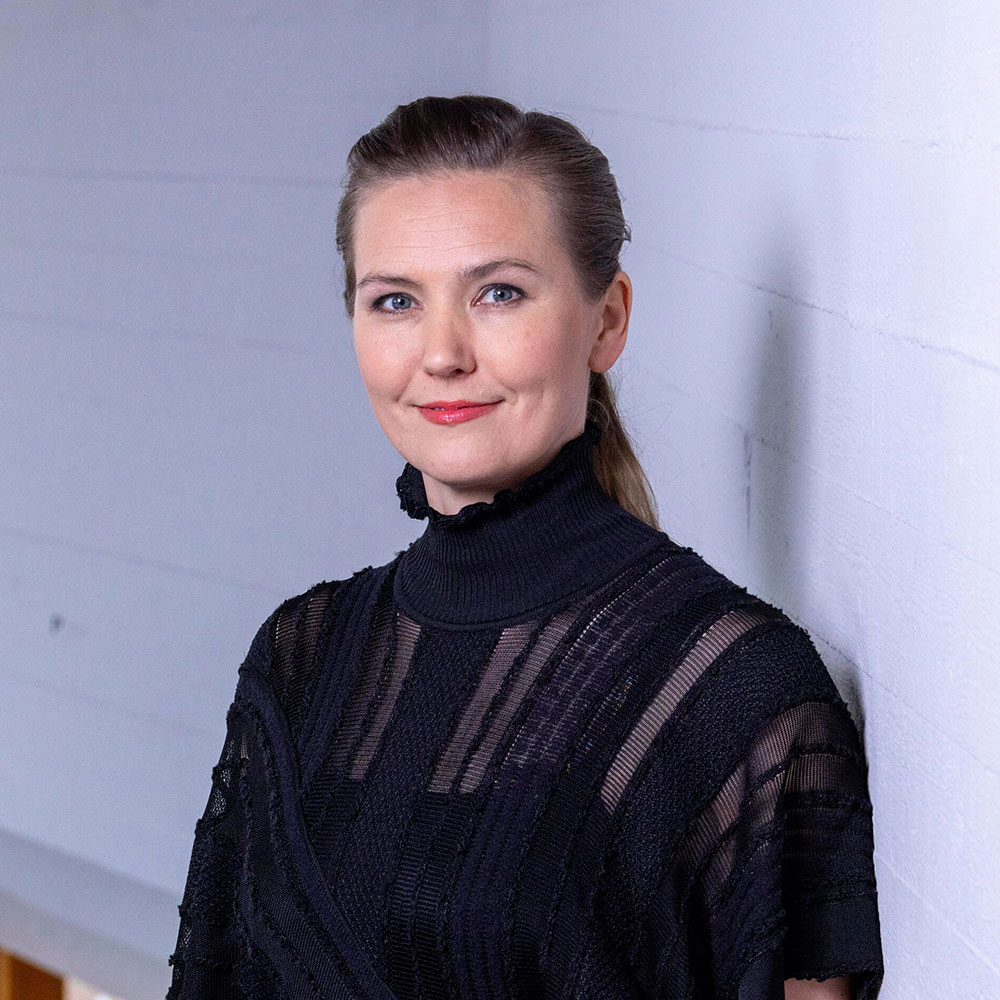
Aalto University
(Finland)
Lecture title:
Electrify wherever possible; story of Electrodeposition-Redox Replacement (EDRR) and more
Professor Mari Lundström is strongly focused on challenges related to sustainable metals production and their recycling. She holds a chair of Hydrometallurgy and Corrosion in Aalto University (Finland), acts as a visiting professor in KTH (Sweden) and promotes a philosophy about the “wise use of materials”. She is one of Europe´s leading researchers on hydrometallurgical recycling of batteries, but her research group focus also on base- and precious metals hydrometallurgy, electrochemical metals refining as well as process modelling and life cycle assessment of emerging primary and secondary processes.
Professor Lundström moved from industry to academy 2015, and has built a successful research group of ca. 25 members, published >200 scientific papers and supervised 15 PhDs to completion. She works closely in the interphase between academy and industry and was leading the pioneering work for European road map of battery raw materials and recycling as WG Chair in Batteries Europe (2021-2022). She is the head of Finland-based battery metals ecosystem (BATCircle2.0, 19 M€) and PI of several EU projects. She acts also as Vice Dean for Research and Innovation at School of Chemical Engineering. She is an inventor of patented Elmery technology, applied for precious metals recovery.
Decarbonization and non-fossil and renewable energy production is highly dependent on minerals and metals. Not only electric vehicles, batteries, permanent magnets, solar cells or wind energy, but also hydrogen economy relies on heavily on metals, of which many are classified as strategic, critical or precious. At the same time, the primary raw materials are increasingly impure and of the lower grade, and secondary raw materials bring new impurities and unconventional metal mixtures into state-of-the-art operations.
Metallurgical industry has taken steps towards carbon low production e.g. via use of renewable or green reductants, hydrogen, renewable energy and digitalization tools. Here, also electrification of metallurgical processing will play a substantial role, as it allows direct use of green energy, new kind of selectivity in recovery and decreases the use of environmentally burdening chemicals. Actually, metallurgical industry has a strong history in employing electrochemical processes in large scale production.
Electrowinning and electrorefining have been applied for decades e.g. for highly concentrated and purified sulfate-based solutions in copper, nickel, and zinc refining. Also silver and gold are purified via electrochemical technologies, typically in nitric and cyanide solutions, respectively. However, in future the operations need to be more flexible, and to be able to use fluctuating green energy, while also adopting totally new electrochemical technologies into production lines.
The use of tailored electrochemical methods has been overlooked in the metallurgical refining. Such methods can operate not only in metals recovery, but also in impurity removal. Further, they may be subjected for waste treatment or even in the recovery of trace amounts of metals from highly impure streams. Here, one recent case example is electrodeposition-redox replacement (EDRR), which was firstly patented in the use of precious metals recovery 9 years ago in Aalto University and is currently utilized industrially. EDRR relies on the high concentration ratio between base and precious metals, where the electricity (ED step) is used for base metals deposition, while the precious metals are recovered spontaneously during the RR step. Tailoring the electrochemical parameters allows target metals to be recovered, even from very low concentrations. The recent research of Aalto University further shows that also aqueous reduction can benefit metals recovery, and even high value functional surfaces built using this technology.
Wise use of raw materials is necessary and future investments in primary minerals refining are critical in order to fulfil the material needs of green transition. Use of electrochemistry in metallurgical processes can enable direct use of green energy, and novel tailoring of processes with a new kind of accuracy, enabling recovery and selectivity for metals from not only highly pure solutions but also from impure multi-metal solutions with low concentrations of target metals or impurities.
Funding: This research is conducted with funding from the EARMetal project (39979) financed by Research Council of Finland.
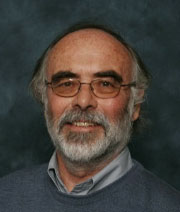
Emeritus Professor at Department of Earth Science and Engineering, Imperial College London; and Director, Anglo Asian Mining plc
(UK)
Lecture title:
Iron control in hydrometallurgy
Emeritus Professor John Monhemius is a non-executive director of Anglo Asian Mining plc. Professor Monhemius held the Roy Wright Chair in Mineral and Environmental Engineering at the Royal School of Mines, Imperial College, London until 2004, when he retired from full-time academic work. From 2000 to 2004, he was Dean of the Royal School of Mines. He has more than 50 years’ experience of academic and industrial research and development in hydrometallurgy and environmental control in mining and metallurgical processes. In retirement, he joined the board of Anglo Asian Mining, a junior gold mining company with assets in Azerbaijan, where he has helped the company develop from a simple, small, open pit-heap leach, gold operation into a multi-mine company, producing copper concentrates, as well as 70koz of gold per year.
–
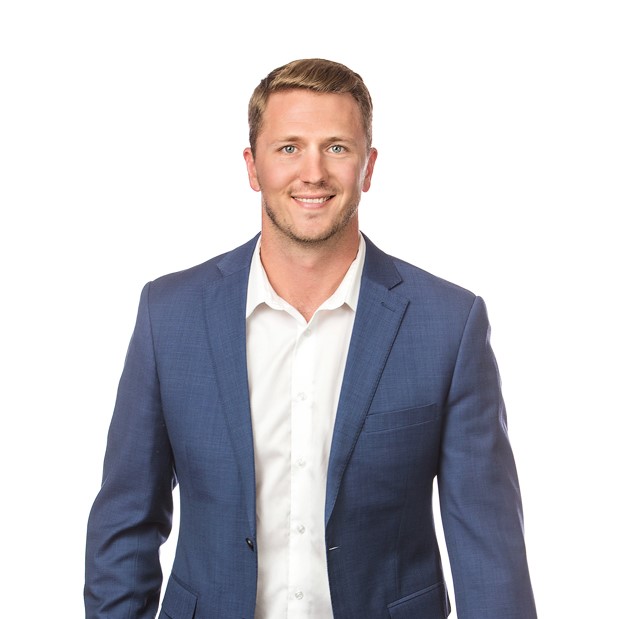
Research and Development Manager, Lithium Americas Corporation
(USA)
Lecture title:
The Thacker Pass Project: A Sustainable Process to Produce Lithium Carbonate from a Clay Resource
Ryan is from Carson City, Nevada, USA and obtained his bachelor’s degree in chemical engineering from the University of Nevada in 2006. He completed his PhD in Chemical Engineering at the Georgia Institute of Technology in 2011 where his research was focused on materials characterization of catalysts used in biomass reforming. After graduating, he began his career in the biofuels industry but eventually transitioned into mineral processing. He joined Lithium Americas in 2018 as a senior process engineer, eventually becoming the Research and Development Manager. He is responsible for operations at the Lithium Americas Technical Center in Reno, NV which focuses on process development testing, optimization, and risk reduction efforts for the Thacker Pass project. He is passionate about the sustainable development of domestic critical mineral resources and sees circular hydrometallurgy playing a key role in transitioning away from fossil fuels.
The Thacker Pass Project, located in NV USA, will be one of the world’s first to commercially produce lithium chemicals from a sedimentary clay resource. Using the principles of circular hydrometallurgy, the flow sheet has been designed to create a sustainable, responsible, and efficient process. This presentation will cover a high level overview of the process, examples of sustainable process design, and discuss challenges and opportunities for new mineral extraction projects.
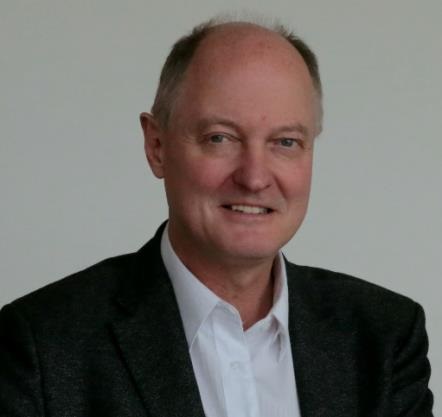
Chief Expert SMS Group
Lecture title:
Digital twinning of large systems: Simulation-based footprinting and exergy allocations of impacts
Industry: Chief Expert SMS Group (Germany 2020 ongoing); Chief Technologist Ausmelt Australia & Director Technology Management Outotec (Australia and Finland 2006-2015); Anglo American Corporation & Mintek (1984-1985 & 1994-1996 South Africa).
Academic: Director at Helmholtz Institute Freiberg (Germany 2015-2020); Full Professor TU Delft (Netherlands 1996-2005); Honorary & adjunct professorships @ (i) TUBAF Freiberg (Germany 2015 ongoing); (ii) Curtin University Perth (Australia 2018 ongoing) (iii) Aalto University (Finland 2012-2018); (iv) Central South University (China 2012-2017) & (v) Melbourne University (Australia, also full
professor 2005-2018).
The circular economy integrates many stakeholders. In order to fully understand the performance of the systems an exergetic basis is required as shown in the Figure (C. Meskers, E. Worrell, M.A. Reuter (2024) Handbook of Recycling – State-Of-the-art for Practitioners, Analysts, and Scientists 2nd Edition, Elsevier, 738p ISBN 978-0-323-85514-3). This implies all processes, streams, stakeholder activities, etc. in the
circular economy must be quantifiable in terms of the unit kW to fully understand the losses from the system.
This should be the basis of a rigorous analysis. LCA is too simplistic in order to fully understand the complex systems, inclusive of thermochemistry, mass and heat
transfer, technology etc., which in the end are all affect the economics part of the circularity economy.
Various examples will be used to discuss this in the context of the circular economy, including extraction and production (physical separation, hydrometallurgy & pyrometallurgy), product design, manufacture, use, end-of-life (EoL) recycling processes etc.
To analyse the systems from among others an industry perspective, artificial intelligence (AI) techniques will be implemented, as well as simulation tools linked to LCA, and similar types of methodologies. The results will clearly challenge present thinking and will highlight the need for fundamental as well as real-world understanding of processing to get to grips with the reality of circular economy.
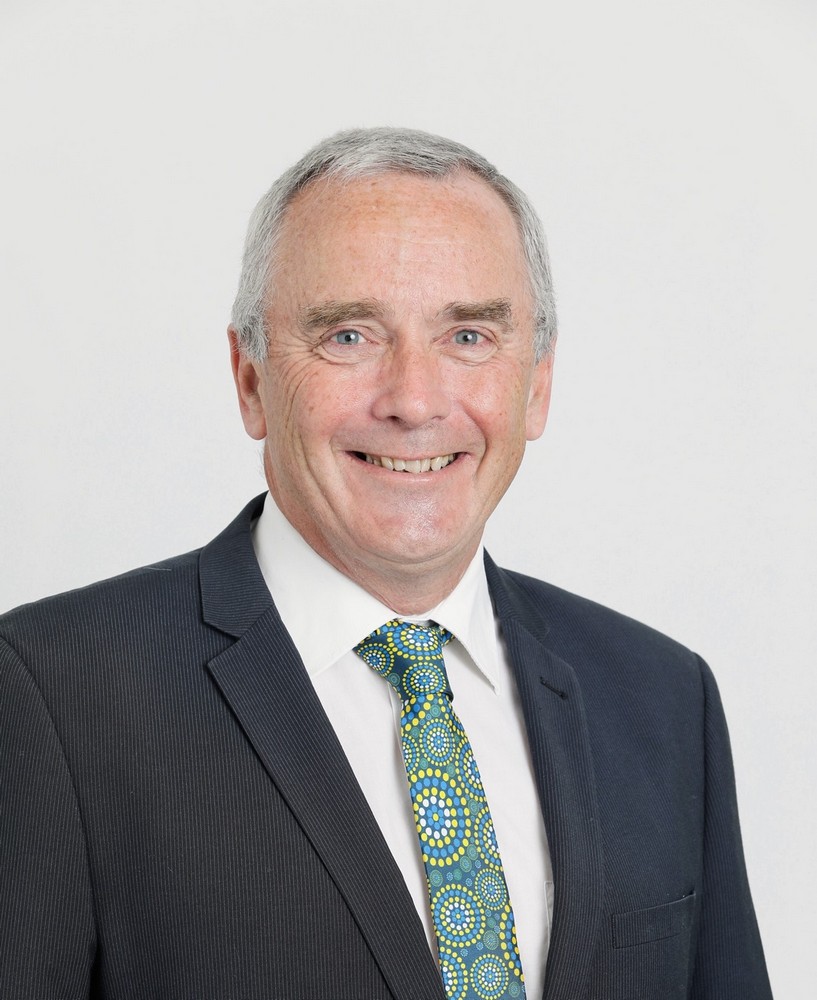
General Manager, Neometals
(Perth, Western Australia)
Lecture title:
Vanadium production in Europe: carbon-neutral, zero-waste vanadium recovery from slag
Graduated in Chemistry through the University of Sheffield (UK) and Wits and UNISA (South Africa). Over 30 years-experience in all aspects of innovation from concept development and demonstration through piloting and commissioning full scale projects. I have been fortunate enough to have worked in university, government and industry laboratories and on operations (from a commissioning team and operational support through to on-site Technical and Production management).
Most of my career I have been involved in hydrometallurgical processes and including projects and operations involving the precious metals (PGM and Au), base metals (particularly Cu, Ni, Co) and more recently lighter elements (Ti, V and Li).
My current role involves technical (particularly hydrometallurgical) leadership for Neometals across a range of primary and secondary material processing and refining, oversight of all research and development activities, and development and management of our innovation and IP portfolios.
Vanadium is categorised as a critical metal (and critical raw material) by the EU and is sought for numerous application including the development of an anticipated vanadium flow battery industry (VRB or VRFB) particularly used for large energy storage applications and needed to facilitate further transition to green energy. However and despite known reserves there is no ongoing primary production of vanadium from ore in Europe. Production of vanadium is dominated by China, Russia and South Africa with geography and geopolitics making supply of vanadium into Europe even more challenging.
Neometals identified the opportunity to develop a flowsheet for the recovery of vanadium from stockpiled steel slag in 2019 and from the bench scale testing of several leach options has developed and demonstrated through to pilot scale the selective leaching, purification and then production of high purity vanadium pentoxide (V2O5). Using green energy the novel (patented) flowsheet recovers vanadium in a carbon-negative flowsheet with regeneration and recycling of the lixiviant during processing. The flowsheet produces only useable solid products and by-products, and does not generate liquid or gaseous emissions. With strong local community support and the assistance of Business Finland an excellent site and local infrastructure has been identified and secured and as testimony to the credentials of the project the environmental permits were granted in Finland without any appeals. A class three engineering study places the production costs well into the lowest quartile and at design feed rate of 300,000 tonnes per annum slag the project is currently in the final stages of project financing and is targeting construction and operation in the next three years.
This project illustrates many of the espoused principles of Circular Hydrometallurgy (while also maintaining a key principal of industry – the project will be profitable) and the presentation will give further insights into the way these principles have been underlying the thinking and actions of the team through flowsheet and overall project development.
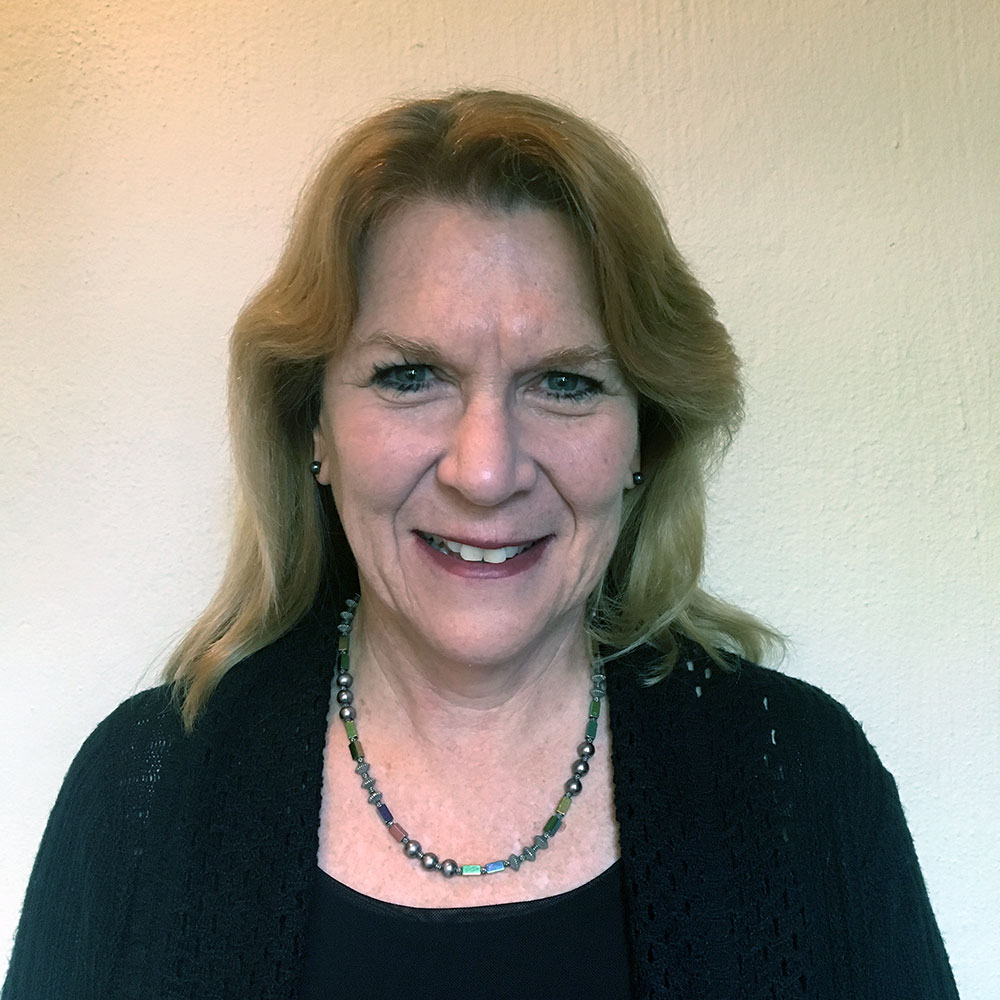
University of Pretoria
(South Africa)
Lecture title:
Copper leach–solvent extraction–electrowinning: a keystone technology for sustainable hydrometallurgy
Kathy holds a PhD from the University of Arizona. She has been providing independent hydrometallurgical consulting services since 2011, with clients on six continents and has worked across a wide range of commodities, including base metals, uranium, titanium, vanadium, and precious metals. She received the 2019 Milton E. Wadsworth award from SME (USA) and the Silver Medal of the SAIMM. Kathy is a Fellow of SAIMM and the South African Academy of Engineers.
Copper is a key element in realization of the just energy transition and the global drive towards achieving more sustainable and lower-energy industries and technologies. Approximately 20% of current world copper cathode production derives from a hydrometallurgical process route, generally referred to as the leach–solvent extraction–electrowinning flowsheet. Despite its status as a relatively mature technology, L–SX–EW can perhaps be considered one of the earliest examples of a flowsheet that meets many of the identified requirements for a circular hydrometallurgical process, facilitated by the unique characteristics of the SX step that provides the link between the metal dissolution and metal recovery steps. From its modest beginnings in the 1960s, today copper accounts for over 80% of all metals recovered by SX. The L–SX–EW technology is practiced on six continents, treating leach solutions from primary sources with a wide range of chemical and physical characteristics to yield high-purity liquors that are suitable for electrowinning of Grade A copper cathode or for product recovery as copper sulfate salt. In recent years, this process is increasingly employed in hydrometallurgical flowsheets for recycling and value recovery from industrial residues and urban e-waste. This presentation discusses the evolution of the copper L–SX–EW process, and the characteristics that favour its incorporation into flowsheets that enable the circular economy and a sustainable global future. Recent developments and an outlook for the future are presented.

BASF SE
(Ludwigshafen, Germany)
Lecture title:
Methane sulfonic acid, a versatile and sustainable acid
Year of Birth: 1977
1997 – 2003: Studied Chemistry (Diploma) at the University of Ulm, Germany
2008: PhD Theses at University of Ulm (Metal-organic chemistry – Homogeneous catalysis, Stereo selective CO insertion reactions)
2008 – 2012: “Dr. Ing. Max Schlötter GmbH” (Geislingen, Germany) – Team leader for corrosion protection electroplating systems
2012 – now: BASF SE (Ludwigshafen, Germany) – Application technology and technical Service Industrial formulators
Methane Sulfonic Acid, an acid with optimal sustainability profile is relatively young acid in terms of industrial availability. Technical advantages MSA delivered in electrochemical processes led to its initial commercial breakthrough in galvanizing and electroplating applications. The lecture will give an overview of its chemical properties in comparison to other widely used and known acids, as well as the main industrial applications of Methane Sulfonic Acid.
Through our presentation focusing on properties and use of MSA in metal plating and metal refining applications, we would like to strongly encourage the stakeholders of hydrometallurgical industry to venture into this relatively new acid to explore what it could offer in terms of sustainability and efficiency without sacrificing the performance.
© 2024 All Rights Reserved SOLVOMET.